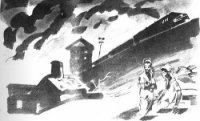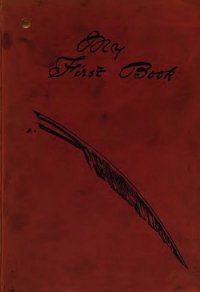Operation Nemesis: The Assassination Plot that Avenged the Armenian Genocide - Bogosian Eric (мир книг .txt) 📗
Despite the relative indifference to religion on the part of the Young Turks (an attitude that evolved into genuine animosity toward the religious establishment when Kemal Ataturk “founded” the Turkish Republic), the CUP was happy to enlist the cooperation of the Islamic leadership in its attack on the Christian millets. As Peter Balakian writes: “On November 14 [1914], less than two weeks after the Ottoman Empire entered the war, the Sheikh ul-Islam (the chief Sunni Muslim religious authority in the Ottoman world), Mustafa Hayri Bey—who was a CUP appointment and not, as it was traditionally, the sultan’s choice—made a formal declaration of jihad in Constantinople, followed by well-organized demonstrations on the streets.”32 Proclamations and pamphlets were distributed. Ambassador Morgenthau quotes extensively from one such pamphlet: “He who kills even one unbeliever of those who rule over us, whether he does it secretly or openly, shall be rewarded by God.”33 There had been many clashes between religious Muslims and Christians in the streets over the years, but this fatwa gave license to wholesale slaughter. In a bizarre twist, Morgenthau was assured by Enver Pasha that no harm would come to American Christians in the empire. And the Germans—allies of the Ottomans but Christians as well—were also exempt from harm. This left only the Armenians, Greeks, and Nestorians as the targets of the jihad. It’s true that many devout Muslims, particularly in the east, understood that attacking helpless people, nonbelievers or not, was contrary to the tenets of Islam. Still, a vast number of Muslims saw the pronouncement of jihad as an endorsement for killing and looting.
The planning of the genocide included a program of cover-up to follow the process of carving out and killing off population groups. Though the Allies, particularly Ambassador Morgenthau, were aware of the massacres of Armenians, the organization behind the effort was very difficult to uncover. After the war, it became almost impossible.34
The cover-up was designed to confuse and obfuscate. To this day, the Turkish government refuses to admit that the actions against the Armenians were centrally planned. The cover-up included:
1) Saying one thing while doing another. When diplomats complained of the killings, the Sublime Porte replied that it would look into the allegations, or that the diplomats were misinformed.
2) Blaming the violence on the Armenian insurgents.
3) Making hollow public pronouncements that the Armenians in the caravans must be protected, or that seized property must be carefully inventoried, orders that were later presented as evidence that the Ottoman government had only the deportees’ best interests at heart.
4) Sending double telegrams. One telegram gave the actual order; the second was contrary to it. The actual order was destroyed, the second saved to support the cover story during the inevitable trials to come.35
5) As the war came to a close, ordering the destruction of relevant CUP files and other pertinent documents.
6) Continuous destruction of relevant files by the Turkish government to the present day.
7) Restricting or banning access to archives.
Finally, denial itself was institutionalized as a government function. Since 1923, the Turkish government has spent tens of millions of dollars in a concerted disinformation campaign to delude the world at large and, perhaps more important, its own people.
PART II
CHAPTER FOUR Tehlirian Goes to War
A nation is a group of people, united by a mistaken view of their past and hostility toward their neighbors.
—Karl Deutsch
Soghomon Tehlirian, the young man who would gun down Talat Pasha on a placid Berlin street, was born in a small village in the Anatolian province of Erzurum in 1896. The village was usually peaceful, but violence could break out at any time. By the end of the nineteenth century, massacre and famine had transformed eastern Turkey into something not unlike America’s “wild West,” rife with famine, disease, and lawlessness. In a region where the meager economy depended on subsistence farming and sheepherding, revolutionaries, hard to distinguish from the bandits who roamed the countryside with impunity, made it their life’s work to pester the local authorities. This was the world that young Tehlirian grew up in, a desperate world interrupted every few years by massacre.
Around the time of the raid on the Bank Ottoman in Constantinople, the weak economy obliged Tehlirian’s father to leave his family and head for Serbia. Khatchadur Tehlirian was typical of thousands of Armenian men who (like my great-grandfathers on both sides) emigrated during this same period. Mired in poverty, unable to feed their families, these men covered great distances to find profitable work, hoping to send some money home. Emigration to outlying parts of the Ottoman Empire was typical. In Valjevo, Serbia, Khatchadur joined other men from the Kemah region of Erzurum, establishing himself as a “coffee merchant.” Though he made promises to return to visit his family, he never made it back before what the Armenians would later call the Medz Yeghern, or “Great Crime.” During the war, crossing borders was almost impossible. Once the war was over, there was no home to return to.
With the head of the household gone, Soghomon’s mother moved the family to the larger town of Erzincan. With 26,000 Armenian residents, Erzincan (or Erzinga) was a provincial center where rural folk could come to buy dry goods, have their horses shod, see a doctor. It was a more sophisticated place than the Tehlirians’ home village of Pekarich. The boy was exposed for the first time to the corrupt practices of Ottoman government “tax farmers,” the proselytizing of Protestant missionaries, and the exciting and brave revolutionary actions of the Tashnag fedayeen.
In 1913, with the Balkan wars winding down, and with the hope of eventually making his way to Germany to study engineering, Tehlirian emigrated to Serbia to join his father. In the late summer of 1914, on the eve of World War I, eighteen-year-old Soghomon heard that Armenians were volunteering to join the Russian forces massing along the border on the brink of war with the Ottoman Empire. Thrilled by the news, the young man was determined to enlist, although his father, with whom he was now living, had forbidden it. In this way he was no different from the millions of idealistic young men in Britain, France, Italy, Greece, Russia, and Germany lining up to volunteer for their respective armies, inflamed by romantic notions of war.
Defying his father, Tehlirian slipped out of Serbia in the fall of 1914 and traveled for twenty-four hours by train to Sofia, Bulgaria, where he found a gathering of Armenian volunteers. Telegrams flew back and forth between the teenager and his father. Khatchadur finally relented and gave Soghomon the permission he needed as a minor, whereupon he formally signed up. Tehlirian and his comrades covered hundreds of miles by rail, crossing eastward through the Crimea and Rostov-on-Don deep within Russian territory. After days of travel, the group of volunteers finally arrived at the northern foothills of the Caucasus Mountains. Here in the capital city of Georgia, Tiflis (Tblisi), Tehlirian officially became a soldier. Barely eighteen, too young to carry a rifle, he insisted on joining the troops headed for the front. In October he was inducted into the medical corps as a gamavor (volunteer).




